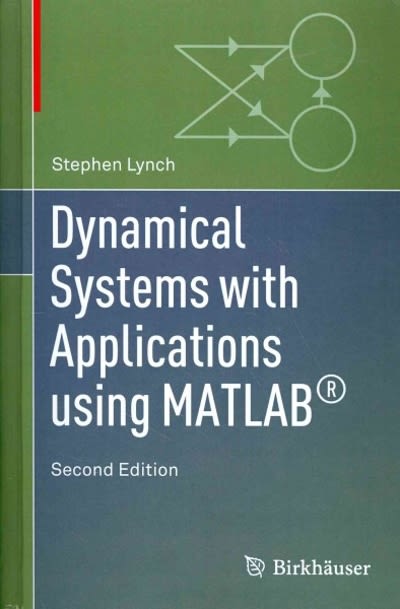Question
In the below information, I'm told the mean is wrong in the TIQ problem leading to the wrong testing statistic... Please assist! Call Center Waiting
In the below information, I'm told the mean is wrong in the TIQ problem leading to the wrong testing statistic... Please assist!
Call Center Waiting Time Part I & II
Perform a test of hypothesis to determine whether the average TIQ (Time in Queue) is lower than the industry standard of 2.5 minutes (150 seconds). Use a significance level a=0.05. Answer: Since the calculated t-statistics doesn't fall within the rejected region, we are unable to reject the hypothesis. Therefore, there is insufficient evidence to state the average Time in Queue is lower than 150 seconds (or 2.5 minutes).
Information:
Mean = 160.896
Standard Deviation = 159.933
Sample Size n = 1674
Hypothesis Mean = 150
Null Hypothesis Less Than or = 150
Alternative Hypothesis is Greater than 150
Based on the Alpha Level = 0.05.
The Critical Value = 1.645
160.896-150/159.933/sqrt of 1674
10.8961/3.9089 = 2.787
z = 2.787 Greater Than z
Critical z = 1.64 (The Null Hypothesis is Rejected)
P=0.0027
0.0027 is less than 0.05 (The Null is Rejected)
Therefore, the conclusion is the population mean of 160.89 is greater than 150.
Evaluate if the company should allocate more resources to improve its average Time in Queue (TIQ).Since the company's Time in Queue (TIQ) exceeds the Industry Standard of 2.5 minutes (or 150 seconds), additional resources should be allocated to improve their average Time in Queue (TIQ). Increasing the number of Call Service Representatives (CSR) will improve TIQ and decrease wait time. Call centers have determined longer wait times has increased the number of dropped calls; therefore, shortening this time will improve customer service, decreased dropped calls and wait times. Another option is to provide additional training for call center staff. This would ensure they are more efficient in remedying the customer's issue and decrease customer Service Time (ST).
Information:
Z = 2.787 (Greater than 95% target)
TIQ > 150 sec (2.5 mins)
P = 0.0027 (less than 0.05)
Perform a test of hypothesis to determine whether the average Service Time (ST) with service protocol PE (new Protocol) is lower than with the PT (Traditional Protocol). Use a significance level a=0.05. Answer: The Average Service Time (ST) with Service Protocol PE is lower than with the Traditional Protocol (PT).
Information:
Test Static = t.
t = 6.834
Left Tailed Critical Value = -1.646
p-value = 0.000 (Reject the null hypothesis)
Assess if the new protocol served its purpose.Answer:Yes, based on my calculations the new protocol served its purpose. PE (new protocol) lowered the call time by 0.05.
Information:
Mean #1 = 149.280
Mean #2 = 212.163
Standard Deviation #1 = 185.894
Standard Deviation #2 = 190.580
N #1 = 853
N #2 = 821
H0: 1=2
Ha:12
Alpha level = 0.05 (df = 1672; total population = -2)
T: Test is > 1.961
Since the T stat = -6.834 > t critical of 1.1961, the NULL Hypothesis is rejected.
Using the P-value (P=0 < 0.05); Therefore, the NULL Hypothesis is rejected.
Population Mean #1is not the same as Population Mean #2 (level of 0.05).
Conclusion
In evaluating the quality of the call center, we must first begin by determining if the TIQ is meeting or exceeding the industry standard. If the TIQ exceeds the industry standard, the organization should allocate additional resources in order to lower their TIQ numbers. Also, if the customer waits too long in the call queue, they may become impatient and hang up, causing an increase in the number of dropped calls. This could potentially impact the organization by lowering its customer satisfaction rating.
Based on the TIQ hypothesis and a significance level of 0.05, there is insufficient information to conclude the Call Center is exceeding the industry standard of 2.5 minutes (or 150 seconds) to answer the calls in the queue. However, there is enough evidence to make a decision about the average Service Time (ST) with the new protocol (PE), which is actually lower than the traditional protocol (PT). The call center should allocate additional resources to improve their average Time in Queue (TIQ). The new protocol (PE) means of 149.28 is smaller than the traditional protocol (PT) means of 212.16. Increasing the number of Call Service Representatives (CSR) will improve TIQ and decrease wait time. Call centers have determined longer wait times has increased the number of dropped calls; therefore, shortening this time will improve customer service, decreased dropped calls and wait times. Another option is to provide additional training for call center staff. This would ensure they are more efficient in remedying the customer's issue. Therefore, implementing the new protocol served its purpose.
Step by Step Solution
There are 3 Steps involved in it
Step: 1

Get Instant Access to Expert-Tailored Solutions
See step-by-step solutions with expert insights and AI powered tools for academic success
Step: 2

Step: 3

Ace Your Homework with AI
Get the answers you need in no time with our AI-driven, step-by-step assistance
Get Started


